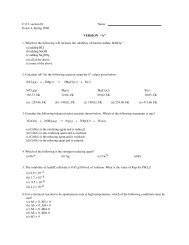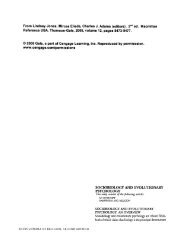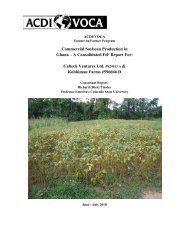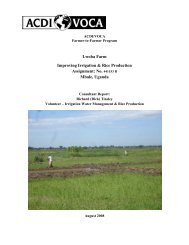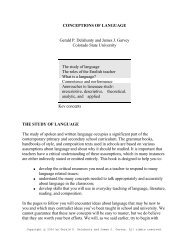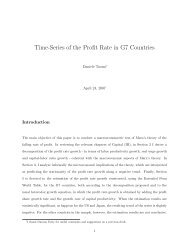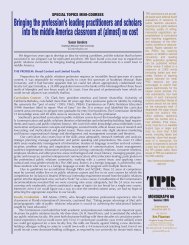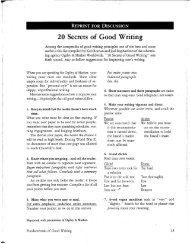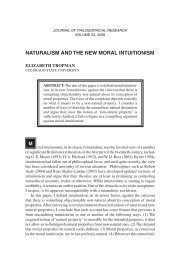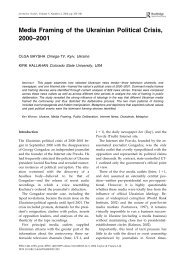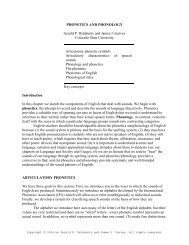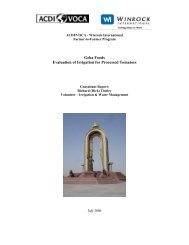Trail Log 1995-1997 - Lamar at Colorado State University
Trail Log 1995-1997 - Lamar at Colorado State University
Trail Log 1995-1997 - Lamar at Colorado State University
You also want an ePaper? Increase the reach of your titles
YUMPU automatically turns print PDFs into web optimized ePapers that Google loves.
Guide, p. 695).<br />
The Russians pushed into Siberia something like the European-Americans pushed across North<br />
America, displacing the n<strong>at</strong>ives.<br />
Many Russians were exiled there, some fled there; many died in the mines and work camps, which<br />
were virtual prisons. But some, freed, found freedom in the open spaces.<br />
Fydor Dostoevsky, Leon Trotsky, Joseph Stalin, and Lenin were exiles here.<br />
Siberia has 53,000 rivers and more than a million lakes. (Lonely Planet, p. 701).<br />
The main rivers of Siberia are:<br />
Ob<br />
Yenisea<br />
Lena<br />
Amur<br />
nicely shown in Classroom Atlas, pp. 70-71.<br />
Though arable land is in short supply, Siberia is rich in resources--oil, gas, coal, diamonds, bauxite,<br />
gold, fish, timber, in a hostile environment. But to whom will the benefits go? The Russians, the<br />
locals, foreign investors. Siberia is still a frontier.<br />
Siberia has the perennial problem of colonies. When they export the raw logs, or ores, or wh<strong>at</strong>ever,<br />
since a raw log represents only a fraction of the value of the finished products th<strong>at</strong> industry will<br />
produce from them, they are exporting the jobs they need to lift themselves out of poverty. The<br />
Japanese and the South Koreans, or the Americans, who import the logs wish, of course, to retain<br />
those more skilled and productive manufacturing jobs for themselves, since they are the secret of<br />
their wealth.<br />
There is a mad rush to cash in on Russian's n<strong>at</strong>ural resources <strong>at</strong> a time when their collapsed<br />
economy makes them especially vulnerable to exploit<strong>at</strong>ion, whether by the mushrooming<br />
transn<strong>at</strong>ional corpor<strong>at</strong>ions, or (as for so many centuries before) by Moscow. They are naive about<br />
capitalism and the need to regul<strong>at</strong>e it.<br />
Taiga - dense, swampy forests of birch, pine, spruce, and larch. Siberia is the world's largest<br />
forest, and 25% of the world's wood reserves.<br />
Northern Eurasia contains the largest intact tracts of wilderness on Earth, boreal forests (taigas),<br />
bogs, tundra, and mountains. About one third of the area is boreal coniferous forests, the largest<br />
forest in the world. Russia has 54% of the world's coniferous forests.<br />
Northern Eurasia has over 22,000 species of vascular plants, 1,100 species of bryophytes, almost<br />
200 species of amphibians and reptiles, 765 species of birds, and 360 species of mammals. About<br />
10% of animal species are endangered are thre<strong>at</strong>ened; many are endemic to Russia.



